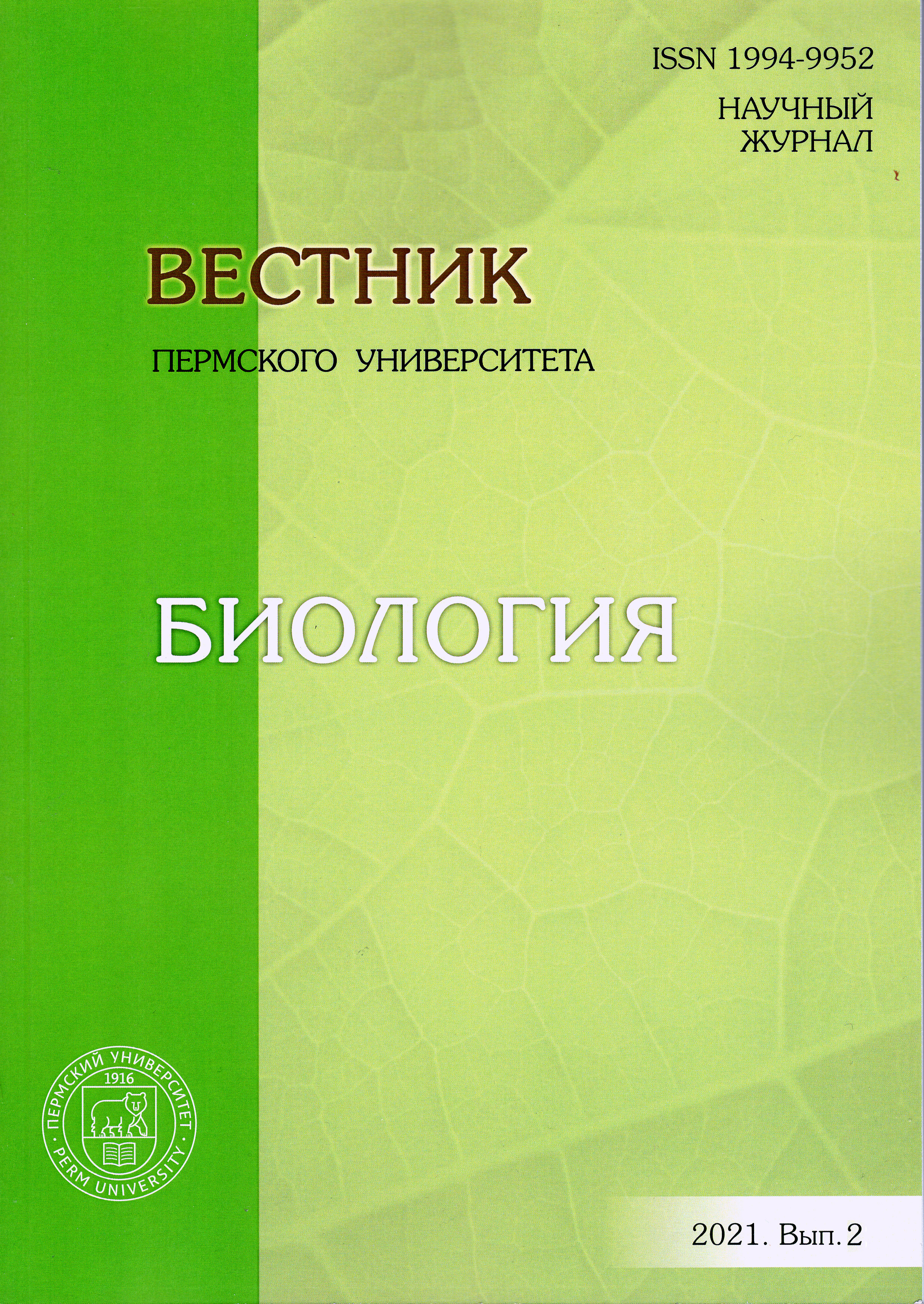Diversity of culturable aerobic bacteria isolated from lindane-contaminated soils
Main Article Content
Abstract
Article Details
References
ГН 1.2.3539-18 Гигиенические нормативы содержания пестицидов в объектах окружающей среды (перечень): Гигиенические нормативы. М.: Федеральный центр гигиены и эпидемиологии Роспотребнадзора, 2019. 156 с.
ГОСТ 17.4.3.01-82. Охрана природы. Почвы. Общие требования к отбору проб. Введ. 1983-01-01. М.: Госстандарт, 1983. 8 с.
Егорова Д.О., Назарова Э.А., Демаков В.А. Новые штаммы-деструкторы линдана Achromobacter sp. NE1 и Brevundimonas sp. 242 // Микробиология. 2021. Т. 90, № 3. С. 357‒361.
Abhilash P.C., Srivastava S., Singh N. Comparative bioremediation potential of four rhizospheric microbial species against lindane // Chemosphere. 2011. Vol. 82, № 1. Р. 56–63.
Camacho-Pérez B. et al. Enzymes involved in the biodegradation of hexachlorocyclohexane: A mini review // Journal of Environmental Management. 2012. Vol. 95. P. S306–S318.
Chuang S. et al. Microbial catabolism of lindane in distinct layers of acidic paddy soils combinedly affected by different water managments and bioremediation strategies // Science of Total Environ-ment. 2020. Vol. 746. 140992
Kiran S.C., Vrinda S.T. Genome sequence of Ochrobactrum anthropi strain SUBG007, a plant pathogen and potential xenobiotic compounds degradation bacterium // Genom Data. 2017. Vol. 4, № 11. Р. 116–117.
Kumar D., Pannu R. Perspectives of lindane (γ-hexachlorocyclohexane) biodegradation from the environment: a review // Bioresources and Bioprocesses. 2018. Vol. 5. P. 29.
Lal R. et al. Biochemistry of Microbial Degradation of Hexachlorocyclohexane and Prospects for Bioremediation // Microbiology and Molecular Biology Reviews. 2010. Vol. 74, № 1. Р. 58–80.
Nagata Y. et al. Aerobic degradation of lindane (γ-hexachlorocyclohexane) in bacteria and its biochemical and molecular basis // Applied and Microbiology Biotechnology. 2007. Vol. 76. P. 741–752.
Revich B. et al. Dioxin exposure and public health in Chapaevsk, Russia // Chemosphere. 2001. Vol. 43. P. 951–966.
Saez J.M., García V.C., Benimeli C.S. Impruvement of lindane removal by Satreptomices sp. M7 by using stable microemulsions // Ecotoxicology and. Environmental Safety. 2017. Vol. 144. P. 351–359.
Short protocols in molecular biology. 3rd ed. / Eds. Ausbel F.M., Brent R., Kingston R.E., Moore D.D., Seidman J.G., Smith J.A., Struhl K. New York: John Wiley & Sons, 1995, 450 p.
Vijgen J. et al. Hexachlorocyclohexane (HCH) as new Stockholm Convention POPs – a global perspective on the management of lindane and its waste isomers // Environmental Science Pollution Re-search. 2011. Vol. 18. P. 152–162.
Willet K.L., Utrich E.M., Hites R.A. Differential toxicity and environmental facts of hexachlorocuclohexane isomers // Environmental Science Technology. 1998. Vol. 32. P. 2197–2207.




